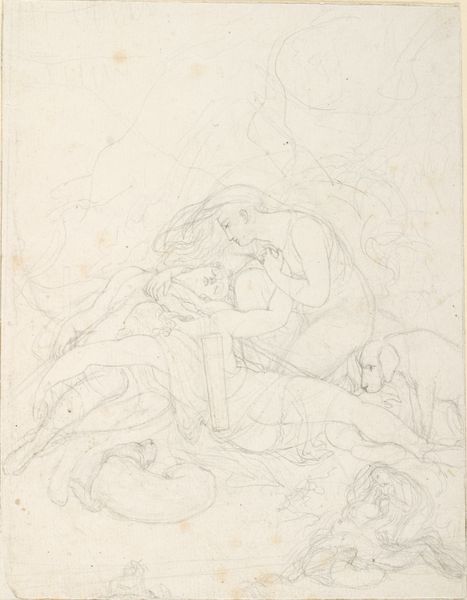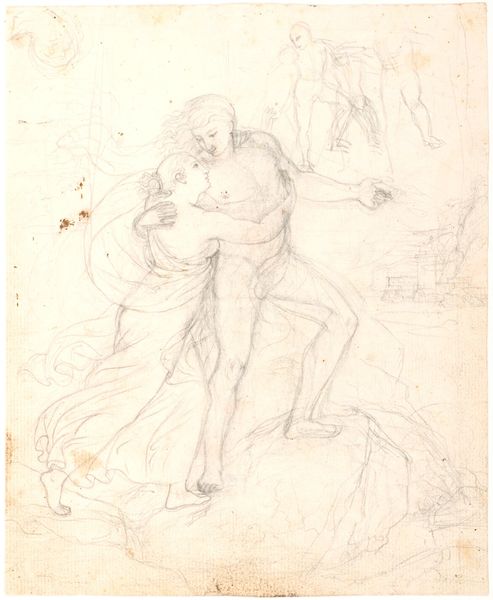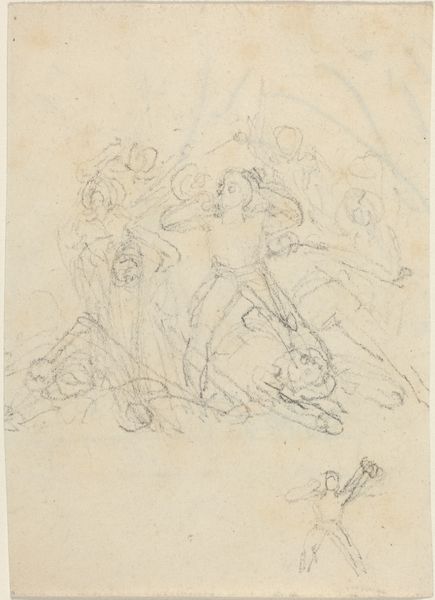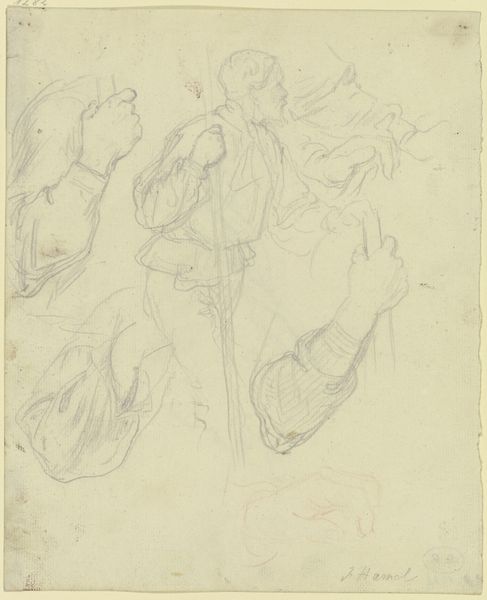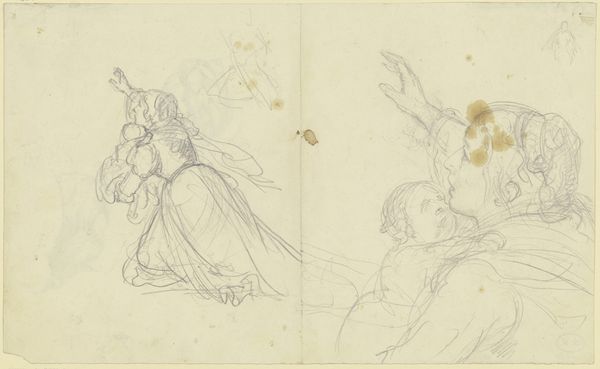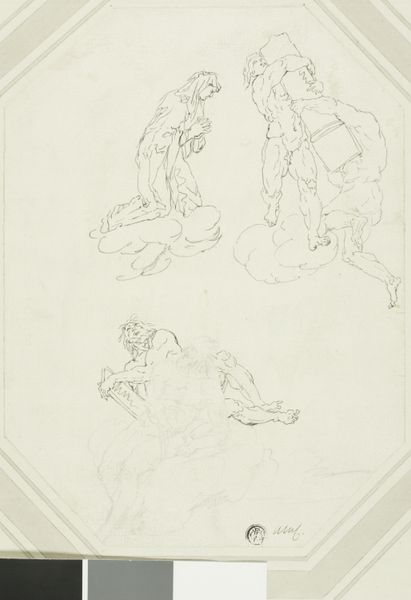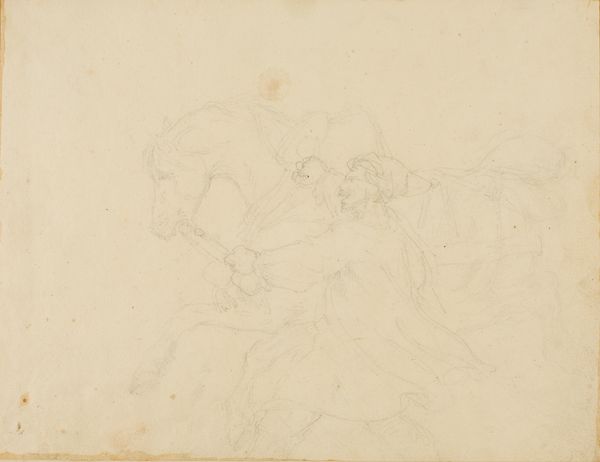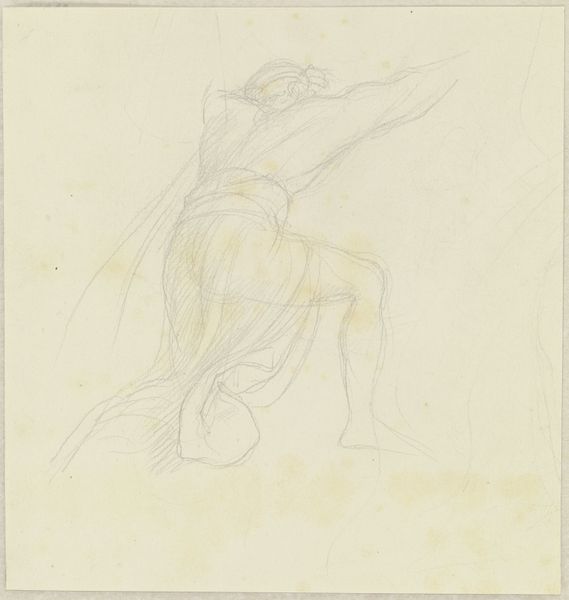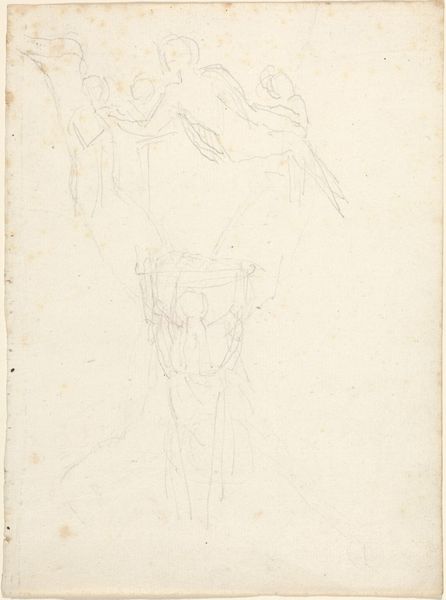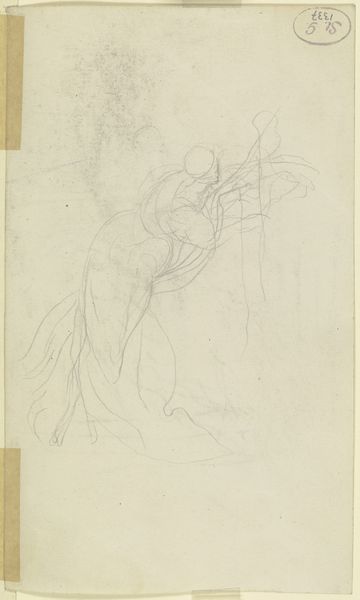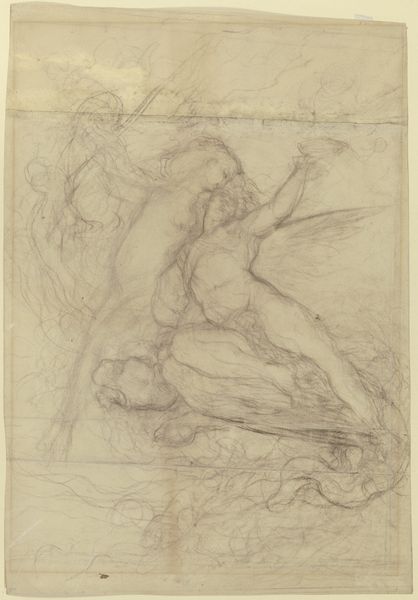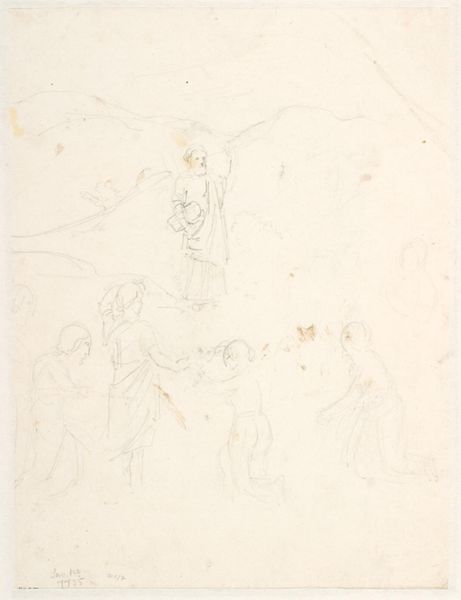
drawing, pencil
#
drawing
#
narrative-art
#
pencil sketch
#
landscape
#
figuration
#
romanticism
#
pencil
Dimensions: 239 mm (height) x 196 mm (width) (bladmaal)
Curator: This pencil sketch by C.G. Kratzenstein Stub, created around 1810, depicts “Alcyone Saying Farewell to her Husband,” drawn from classical mythology. Editor: There's a raw vulnerability in this drawing. The lines are so delicate, almost ephemeral. It evokes a sense of fleeting moments and emotional intensity, doesn't it? The materiality feels so integral to the story's tone. Curator: Absolutely. We can see this narrative reflected throughout romanticism, the male hero goes off, embarking on a perilous journey, with a woman watching from shore. How do these constructions of masculinity and femininity reinforce and constrain societal roles, particularly within the context of 19th-century expectations? Editor: Thinking materially, you see the texture of the paper almost glowing through the delicate graphite lines, and notice how that illuminates these soft forms, underscoring themes of fragility and impermanence? How the materials used shape the content—in that case, its narrative of romance and mortality. Curator: Precisely. And in analyzing it, we must consider how Alcyone's position within this narrative challenges or perhaps reinforces patriarchal structures that confine female agency and mobility during that time period. Is Alcyone merely a passive observer? Or does her farewell embody a form of silent resistance against a culture that prioritizes male adventure over female domesticity? Editor: Consider then, the cost of these adventures and narratives – what is physically expended, to create such an image, with its raw materials – but furthermore, in labor. We might think, then, of what the making itself tells us. Does the quick rendering here tell us about speed and perhaps something urgent that the artist hoped to capture? Curator: Stub captures a moment laden with grief, but does that reflect universal themes of love and sacrifice? The historical dimensions certainly cannot be separated from the human conditions it depicts, reminding us that grief transcends time yet is always culturally inflected. Editor: When looking closer to its materials, we are seeing the cost—what it is for the maker, the materials involved, even now in how we view and preserve this artwork. A look back, and simultaneously, towards a new form of critical approach that allows for a better vision and awareness.
Comments
No comments
Be the first to comment and join the conversation on the ultimate creative platform.
